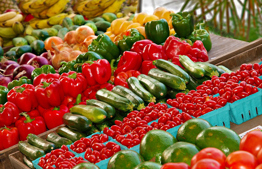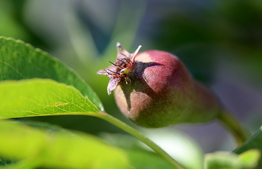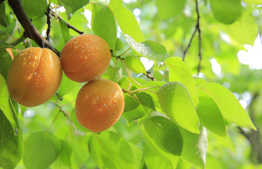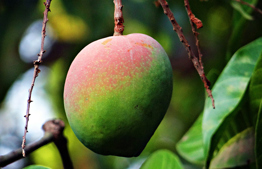Blue Gold – Blueberries and Orlah

Are there blueberry varieties that are considered a vegetable and thus not subject to the laws of orlah? What is the difference between northern and southern varieties?
Blueberries are king of berries. Their deep blue color and rich taste are the trademarks of one of the most expensive fruits in the market. The average price for a 200 g package of blueberries is NIS 30, quite fitting for this blue gold.
What are blueberries and why are they so expensive?
Blueberries grow on a perennial bush that belongs to the heather family. Their primary growing regions are Europe, North America, and New Zealand. There are two major cultivars of the bush. Northern varieties, which have grown in Israel also in the past, produce fruit approximately 18 months from the time of planting. These bushes are deciduous and fruit generally in late winter through spring. Another cultivar group is known as the southern varieties, originating from South America. Such varieties are not deciduous. They fruit during the winter months when their northern counterparts do not bear fruit. For this reason, there is major interest in cultivating these varieties to compete with imports during the winter.
The steep price of fresh blueberries is due to several factors. First, the entire growing process in Israel is more expensive. Soil acidity in Israel is considerably lower than the acidity levels most conducive to the berry (PH 4.5–5.5). Furthermore, basic soil harms the bush's roots, undermining their ability to absorb minerals and perform photosynthesis. For these reasons, blueberry bushes are generally grown in containers with coco choir, peat, in channels filled with tuff or in growing channels on the ground. Blueberry cultivation is also labor intensive during harvest since the fruit is so delicate.
Torah VeHa'aretz Institute supervises several nurseries that grow blueberries. This field raises many halachic questions that involve an interface between Torah and science, between growing methods and the laws of shemitah and orlah.
Blueberry bushes are defined halachically as trees, not vegetables. In light of this, three years of orlah need to be counted until it is possible to enjoy the fruit. This is another factor that influences the cost of blueberries, since it is impossible to cover growing costs from selling the fruit in the initial years. The halachic criteria for classifying the plant as a tree is its perennial nature and the way it renews its growth. The blueberry bush grows for many years and has a woody, perennial stem, which is why it is considered a fruit tree. Another criterion was innovated by Radbaz (one of the great early Acharonim), who maintained that plants that fruit within one year from planting should be classified as vegetables. While this criterion was not accepted by all posekim, the Sephardi posekim traditionally exempt such plants from the orlah prohibitions and classify them as vegetables.
Recently it has been claimed that southern variety blueberries can fruit within a year. According to Radbaz, this would classify them as vegetables and exempt them from the orlah prohibition. An experiment was conducted to prove this thesis, but as yet the results are inconclusive. First, over the course of the experiments the bushes were grown in artificial conditions that do not exist in nature. Furthermore, the experiment was performed on only a few strains, to the point where we could have a bizarre situation in which some blueberry bushes are defined as trees, while others are considered vegetables. For these reasons, the conclusion for the time being is that blueberries are subject to orlah prohibitions and three orlah years need to be counted before harvest. If the crops are detached from the ground, they are still subject to orlah miderabanan. However, the fact that they grow on detached platforms makes room for halachic leniencies during the shemitah year: shemitah prohibitions do not apply to greenhouses (considered indoors) when grown detached from the ground.
Torah VeHa'aretz Institute has undertaken the halachic supervision of a large-scale blueberry cultivation project on detached platforms (approximately 100,000 seedlings). The goal is to harvest mechanically even though the bushes are being grown on detached platforms. It is our hope that, G-d willing, that the project will succeed and mehadrin blueberries will be available in another two years at a more reasonable price.
Note (Rabbi Moshe Bloom): The blueberry is the most problematic fruit vis-à-vis the orlah prohibition in Israel today (5782). One-third of the fruit, sold without kashrut certification, is orlah fruit and is thus forbidden to eat. For this reason, one may only purchase blueberries that have kashrut certification on the box or from stores with kashrut certification.
The author, Rabbi Dr. Yoel Friedemann, is one of the rabbis of Torah VeHa'aretz Institute. He lectured on this topic in Nissan 5782 at the 28th Torah Umadda Conference cohosted by the Jerusalem Technology College—Lev Academic Center and Bar Ilan University.




